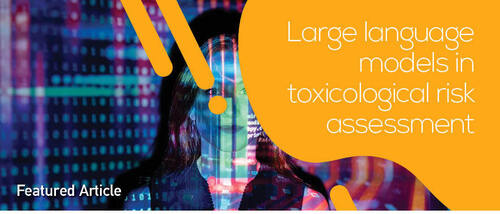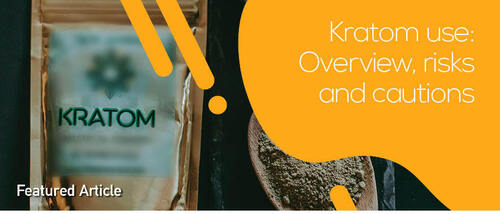Manuscript Types
Research Papers
Articles reporting research may be full length or brief reports. These should report original research findings within the journal's scope. Papers should generally be a maximum of 4000 words in length, excluding tables, references, and abstract and key points of the article, whilst it is recommended that the number of references should not exceed 36.
Review Papers
Comprehensive, authoritative, reviews within the journal's scope. There are two types of review papers:
- systematic review papers: respond to a specific research question, accrue from criterion-based selection of sources, include a quantitative synthesis and a statistical method (meta-analysis).
Guidelines used for abstracting data and assessing data quality and validity should be noted in methods section.
- narrative review papers: the research question may be broad, and the scope of this review is to discuss a specific topic and keep the readers up-to-date about it. This type of review does not necessarily include a methodological approach and its synthesis is usually qualitative. Narrative reviews should include in a developments section, with details regarding data sources used, keywords applied, time restrictions and study types selected. Developments should be based on actual review articles.
All review papers should be generally less than 6000 words, excluding abstract, tables, figures and references. References should not exceed 50. Conclusion of the reviews should be specific and stem from the findings.
All systematic reviews should comply with the PRISMA guidelines:
PRISMA Checklist PRISMA Expanded Checklist
Short Reports
Brief reports of data from original research. Short reports are shorter versions of original articles, may include one table or figure, should not exceed 1500 words, and it is recommended that the number of references should not exceed 15. Short reports are suitable for the presentation of research that extends previously published research, including the reporting of additional controls and confirmatory results in other settings, as well as negative results. Authors must clearly acknowledge any work upon which they are building, both published and unpublished.
Methodology Papers
Methodology papers will present different methodological approaches that can be used to investigate problems in a relevant scientific field and to encourage innovation. It is suggested that case studies or practical examples, which can be existing ones, are included to demonstrate the consistency and applicability of the methodology.
Methodology papers should be generally less than 6000 words, excluding abstract, tables, figures and references. References should not exceed 50.
Case reports
Case reports (or clinical case studies) are reports that may refer to classical or rare conditions, their diagnosis and management, as well as feature novel findings, or encourage new management strategies. Case reports usually focus on a valuable clinical lesson, and their text should not exceed 1500 words, excluding references and tables. It is recommended that the number of references should not exceed 15, and a maximum of 3 tables & figures (in total) is preferred. Abstracts for case reports should be unstructured and not more than 250 words. The suggested format for case reports is Introduction, Case Presentation and Conclusion. Depending on their interest and originality, case reports may include a commentary or discussion on the case presented. All case reports should comply with the CARE guidelines:
CARE Checklist
Short/Rapid Communications
Short/Rapid Communications are complete studies and may report urgent data, or present preliminary results that may be not enough to justify a full paper, as well as small-scale studies. Short/Rapid Communications are limited to 2500-3000 words. The abstract is limited to 250 words and is unstructured, the number of references should not exceed 10, and they may include 2 tables or figures. Main text should consist of Introduction, Commentary and Conclusion. Publication time may be faster compared to other submissions, when Rapid Communications are evaluated by editors as urgent and rapid dissemination of results is crucial.
Letters To The Editor
A letter to the Editor is a brief report that is within the journal's scope and of particular interest to the community, but not suitable as a standard research article. A maximum of ten articles may be included in the references. Letters to the Editor may be edited for clarity or length and may be subject to peer review at the Editors' discretion. To contribute, please contact the Editors. Letters intended for publication should be a maximum of 500 words, contain 10 references, and up to one table or figure. These rules apply for research letters, and letters that respond to articles published in the journal. Letters to the editor are subject to editorial editing so as to streamline the article with the journal's style. Corrections to published articles are also published as a letter and linked to the corrected version of the article.
Editorials
Editorials are written by members of the Editorial Board and may reflect current articles within Public Health and Toxicology or discuss significant national or international projects or initiatives.
Articles reporting research may be full length or brief reports. These should report original research findings within the journal's scope. Papers should generally be a maximum of 4000 words in length, excluding tables, references, and abstract and key points of the article, whilst it is recommended that the number of references should not exceed 36.
Review Papers
Comprehensive, authoritative, reviews within the journal's scope. There are two types of review papers:
- systematic review papers: respond to a specific research question, accrue from criterion-based selection of sources, include a quantitative synthesis and a statistical method (meta-analysis).
Guidelines used for abstracting data and assessing data quality and validity should be noted in methods section.
- narrative review papers: the research question may be broad, and the scope of this review is to discuss a specific topic and keep the readers up-to-date about it. This type of review does not necessarily include a methodological approach and its synthesis is usually qualitative. Narrative reviews should include in a developments section, with details regarding data sources used, keywords applied, time restrictions and study types selected. Developments should be based on actual review articles.
All review papers should be generally less than 6000 words, excluding abstract, tables, figures and references. References should not exceed 50. Conclusion of the reviews should be specific and stem from the findings.
All systematic reviews should comply with the PRISMA guidelines:
Short Reports
Brief reports of data from original research. Short reports are shorter versions of original articles, may include one table or figure, should not exceed 1500 words, and it is recommended that the number of references should not exceed 15. Short reports are suitable for the presentation of research that extends previously published research, including the reporting of additional controls and confirmatory results in other settings, as well as negative results. Authors must clearly acknowledge any work upon which they are building, both published and unpublished.
Methodology Papers
Methodology papers will present different methodological approaches that can be used to investigate problems in a relevant scientific field and to encourage innovation. It is suggested that case studies or practical examples, which can be existing ones, are included to demonstrate the consistency and applicability of the methodology.
Methodology papers should be generally less than 6000 words, excluding abstract, tables, figures and references. References should not exceed 50.
Case reports
Case reports (or clinical case studies) are reports that may refer to classical or rare conditions, their diagnosis and management, as well as feature novel findings, or encourage new management strategies. Case reports usually focus on a valuable clinical lesson, and their text should not exceed 1500 words, excluding references and tables. It is recommended that the number of references should not exceed 15, and a maximum of 3 tables & figures (in total) is preferred. Abstracts for case reports should be unstructured and not more than 250 words. The suggested format for case reports is Introduction, Case Presentation and Conclusion. Depending on their interest and originality, case reports may include a commentary or discussion on the case presented. All case reports should comply with the CARE guidelines:
Short/Rapid Communications
Short/Rapid Communications are complete studies and may report urgent data, or present preliminary results that may be not enough to justify a full paper, as well as small-scale studies. Short/Rapid Communications are limited to 2500-3000 words. The abstract is limited to 250 words and is unstructured, the number of references should not exceed 10, and they may include 2 tables or figures. Main text should consist of Introduction, Commentary and Conclusion. Publication time may be faster compared to other submissions, when Rapid Communications are evaluated by editors as urgent and rapid dissemination of results is crucial.
Letters To The Editor
A letter to the Editor is a brief report that is within the journal's scope and of particular interest to the community, but not suitable as a standard research article. A maximum of ten articles may be included in the references. Letters to the Editor may be edited for clarity or length and may be subject to peer review at the Editors' discretion. To contribute, please contact the Editors. Letters intended for publication should be a maximum of 500 words, contain 10 references, and up to one table or figure. These rules apply for research letters, and letters that respond to articles published in the journal. Letters to the editor are subject to editorial editing so as to streamline the article with the journal's style. Corrections to published articles are also published as a letter and linked to the corrected version of the article.
Editorials
Editorials are written by members of the Editorial Board and may reflect current articles within Public Health and Toxicology or discuss significant national or international projects or initiatives.
We process personal data collected when visiting the website. The function of obtaining information about users and their behavior is carried out by voluntarily entered information in forms and saving cookies in end devices. Data, including cookies, are used to provide services, improve the user experience and to analyze the traffic in accordance with the Privacy policy. Data are also collected and processed by Google Analytics tool (more).
You can change cookies settings in your browser. Restricted use of cookies in the browser configuration may affect some functionalities of the website.
You can change cookies settings in your browser. Restricted use of cookies in the browser configuration may affect some functionalities of the website.








